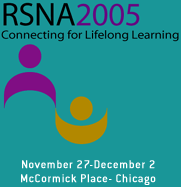
Abstract Archives of the RSNA, 2005
Frederik Lars Giesel MD, Presenter: Nothing to Disclose
Torsten Wuestenberg, Abstract Co-Author: Nothing to Disclose
Hendrik von Tengg-Kobligk MD, Abstract Co-Author: Nothing to Disclose
Peter Schoenknecht, Abstract Co-Author: Nothing to Disclose
Johannes Schroeder MD, Abstract Co-Author: Nothing to Disclose
Marco Essig MD, Abstract Co-Author: Nothing to Disclose
Previous fMRI studies using the ‚n-back-paradigm‘ as a visuo-spatial working memory task demonstrated that performance and cerebral activation may depend on many factors (training effects, age, clinical status). To investigate the stability of activation changes in schizophrenia, we compared the fMRI-BOLD-response and performance in patients with first-episode schizophrenia and controls at baseline and at a two-week follow-up.
Patients with first-episode schizophrenia (n=5) and controls (n=7) matched for age, gender and education were enrolled. The patients received neuroleptic treatment and were in partial remission. The participants performed the ‚n-back‘-task on two occasions within 14 days. ‚0-‘, ‚1-‘ and ‚2-back‘-tasks were presented in random order four times with a cross as resting condition in between. We used a 1.5 T MRI scanner with standard head coil and a GE-EPI sequence. Images were analyzed using SPM99. Activated voxels were identified by the "General Linear Model" approach.
Performance in the n-back task was significantly lower in patients than controls. However, patients showed a slight improvement in psychopathological symptoms. On both occasions, the controls showed also a rather stable activation pattern involving bilateral frontal inferior/medial gyrus (IFG/MFG), intra-parietal sulcus (IPS) and anterior cingulate gyrus (GCa) in the ‚2-‘vs.- ‚0-back‘- contrast. At baseline, patients presented with a markedly decreased activation compared to controls, with a left hemispheric dominance. After two weeks, the activation increased and the patients showed a similar activation pattern as the healthy controls, despite of a slight difference in the frontal areas.
In functional MRI, the cerebral activation patterns during performance of a working memory task remained stable in healthy controls. In comparison, schizophrenic patients initially showed a marked reduction of activation in the IFG/MFG with a lateralization towards the left hemisphere, this "hypofrontal" activation pattern resolved during follow-up.
Giesel, F,
Wuestenberg, T,
von Tengg-Kobligk, H,
Schoenknecht, P,
Schroeder, J,
Essig, M,
Monitoring of Cerebral Dysfunction during Working Memory Performance in First-Episode Schizophrenic Patients. Radiological Society of North America 2005 Scientific Assembly and Annual Meeting, November 27 - December 2, 2005 ,Chicago IL.
http://archive.rsna.org/2005/4415282.html

